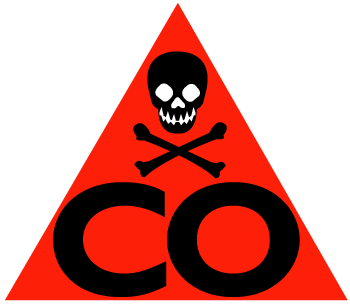Choosing the Right Carbon Monoxide Alarm
Did you know that choosing the right carbon monoxide alarm may mean the difference between life and death?
If you were to walk through several homes in the United States, it is quite likely that you would observe a fire alarm, possibly many fire alarms, posted throughout those homes. Unfortunately, you may not observe even one carbon monoxide alarm. Carbon monoxide is not as physically evident as a fire or smoke.
As a matter of fact, it is often referred to as the "Silent Killer" due to the fact that it is nearly impossible to know if this substance is lingering through your home - even at high levels. It is important to know the steps that are required in order to ensure that you are picking the right carbon monoxide alarm. In this guide, you will learn just that.
There are three types of carbon monoxide alarms available on the market at this time. When choosing one, it is essential to know and understand the features that each has. It is also important to consider the overall size of your home, as well as how many units you would need to place throughout your home in order to ensure your safety, as well as the safety of the other individuals in your home.

The first type of carbon monoxide alarm is called a "Biometric". You may also choose a alarm referred to as a "Semiconductor". The last type of carbon monoxide alarm is called an "Electrochemical" detector. The following highlights the specifics of each of these models:
Biometric - When choosing a biometric carbon monoxide detector, you are looking at a unit that will last approximately ten years. There is a gel on the inside of the unit that works to absorb any carbon monoxide that is present in the air. By electing to use this unit, you will be required to replace what is called the "sensory module" within the unit, as well as the battery on a period of every two years. If carbon monoxide is absorbed by the cell within the unit, it will need to be aired out for approximately one day in order to be effective as a unit again.
Semiconductor - If you would like to experience maintenance that is considered to be "minimal", this type of carbon monoxide detector will be your best choice. You may simply plug this unit in and there is a sensor that is electronic contained in it. You can expect this model to last at least five years.
Electrochemical - This type of alarm is able to effectively trace carbon monoxide within the home. The battery is self-powered and it is expected that these units will last about five years.
Choosing a carbon monoxide detector can mean the difference between life and death for you, as well as the others that reside in your home. While there are three types of alarms for your home, it is important to understand the features of each. In addition to the types available, you should carefully consider what type of alarm that you want as part of the unit that you purchase.
The most beneficial type includes an audible and visual alarm. Just remember, you should include at least one carbon monoxide detector for your home. This is better than no protection at all.
However, choosing a carbon monoxide detector for several rooms throughout your home will optimize your protection, and the protection of the others that reside in the home with you.
A colorless, odorless gas, carbon monoxide is produced by automobile engines, by burning charcoal,, coal, or wood, and by incorrect combustion in oil burners or space heaters. Prevent poisoining by regular checkups of heating and car-exhaust systems and by providing adequate ventilation.
A person who is being poisoned by carbon monoxide will have a headache, feel dizzy and nauseous, and semm drowsy. If not removed quickly from the source of the fumes, he or she may turn red, lose consciousness, and die--sometimes within minutes.
Get the person outside into frash air, or open all the doors and windows. Call an ambulance or the police or fire department for oxygen. If breathing has stopped, begin mouth to mouth resusitation and have someone else call for help.
From Carbon Monoxide Alarm to Fire Alarms
Back to Home Alarms-to-Alert-You


